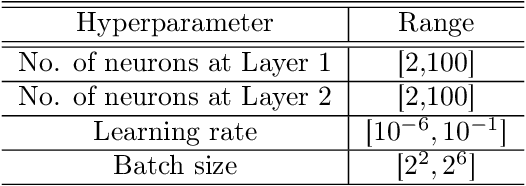Konstantinos D. Polyzos
ActiveInitSplat: How Active Image Selection Helps Gaussian Splatting
Mar 10, 2025



Abstract:Gaussian splatting (GS) along with its extensions and variants provides outstanding performance in real-time scene rendering while meeting reduced storage demands and computational efficiency. While the selection of 2D images capturing the scene of interest is crucial for the proper initialization and training of GS, hence markedly affecting the rendering performance, prior works rely on passively and typically densely selected 2D images. In contrast, this paper proposes `ActiveInitSplat', a novel framework for active selection of training images for proper initialization and training of GS. ActiveInitSplat relies on density and occupancy criteria of the resultant 3D scene representation from the selected 2D images, to ensure that the latter are captured from diverse viewpoints leading to better scene coverage and that the initialized Gaussian functions are well aligned with the actual 3D structure. Numerical tests on well-known simulated and real environments demonstrate the merits of ActiveInitSplat resulting in significant GS rendering performance improvement over passive GS baselines, in the widely adopted LPIPS, SSIM, and PSNR metrics.
3D Reconstruction in Noisy Agricultural Environments: A Bayesian Optimization Perspective for View Planning
Sep 29, 2023Abstract:3D reconstruction is a fundamental task in robotics that gained attention due to its major impact in a wide variety of practical settings, including agriculture, underwater, and urban environments. An important approach for this task, known as view planning, is to judiciously place a number of cameras in positions that maximize the visual information improving the resulting 3D reconstruction. Circumventing the need for a large number of arbitrary images, geometric criteria can be applied to select fewer yet more informative images to markedly improve the 3D reconstruction performance. Nonetheless, incorporating the noise of the environment that exists in various real-world scenarios into these criteria may be challenging, particularly when prior information about the noise is not provided. To that end, this work advocates a novel geometric function that accounts for the existing noise, relying solely on a relatively small number of noise realizations without requiring its closed-form expression. With no analytic expression of the geometric function, this work puts forth a Bayesian optimization algorithm for accurate 3D reconstruction in the presence of noise. Numerical tests on noisy agricultural environments showcase the impressive merits of the proposed approach for 3D reconstruction with even a small number of available cameras.
Weighted Ensembles for Active Learning with Adaptivity
Jun 10, 2022



Abstract:Labeled data can be expensive to acquire in several application domains, including medical imaging, robotics, and computer vision. To efficiently train machine learning models under such high labeling costs, active learning (AL) judiciously selects the most informative data instances to label on-the-fly. This active sampling process can benefit from a statistical function model, that is typically captured by a Gaussian process (GP). While most GP-based AL approaches rely on a single kernel function, the present contribution advocates an ensemble of GP models with weights adapted to the labeled data collected incrementally. Building on this novel EGP model, a suite of acquisition functions emerges based on the uncertainty and disagreement rules. An adaptively weighted ensemble of EGP-based acquisition functions is also introduced to further robustify performance. Extensive tests on synthetic and real datasets showcase the merits of the proposed EGP-based approaches with respect to the single GP-based AL alternatives.
Surrogate modeling for Bayesian optimization beyond a single Gaussian process
May 27, 2022



Abstract:Bayesian optimization (BO) has well-documented merits for optimizing black-box functions with an expensive evaluation cost. Such functions emerge in applications as diverse as hyperparameter tuning, drug discovery, and robotics. BO hinges on a Bayesian surrogate model to sequentially select query points so as to balance exploration with exploitation of the search space. Most existing works rely on a single Gaussian process (GP) based surrogate model, where the kernel function form is typically preselected using domain knowledge. To bypass such a design process, this paper leverages an ensemble (E) of GPs to adaptively select the surrogate model fit on-the-fly, yielding a GP mixture posterior with enhanced expressiveness for the sought function. Acquisition of the next evaluation input using this EGP-based function posterior is then enabled by Thompson sampling (TS) that requires no additional design parameters. To endow function sampling with scalability, random feature-based kernel approximation is leveraged per GP model. The novel EGP-TS readily accommodates parallel operation. To further establish convergence of the proposed EGP-TS to the global optimum, analysis is conducted based on the notion of Bayesian regret for both sequential and parallel settings. Tests on synthetic functions and real-world applications showcase the merits of the proposed method.
Unveiling Anomalous Edges and Nominal Connectivity of Attributed Networks
Apr 17, 2021


Abstract:Uncovering anomalies in attributed networks has recently gained popularity due to its importance in unveiling outliers and flagging adversarial behavior in a gamut of data and network science applications including {the Internet of Things (IoT)}, finance, security, to list a few. The present work deals with uncovering anomalous edges in attributed graphs using two distinct formulations with complementary strengths, which can be easily distributed, and hence efficient. The first relies on decomposing the graph data matrix into low rank plus sparse components to markedly improve performance. The second broadens the scope of the first by performing robust recovery of the unperturbed graph, which enhances the anomaly identification performance. The novel methods not only capture anomalous edges linking nodes of different communities, but also spurious connections between any two nodes with different features. Experiments conducted on real and synthetic data corroborate the effectiveness of both methods in the anomaly identification task.
 Add to Chrome
Add to Chrome Add to Firefox
Add to Firefox Add to Edge
Add to Edge